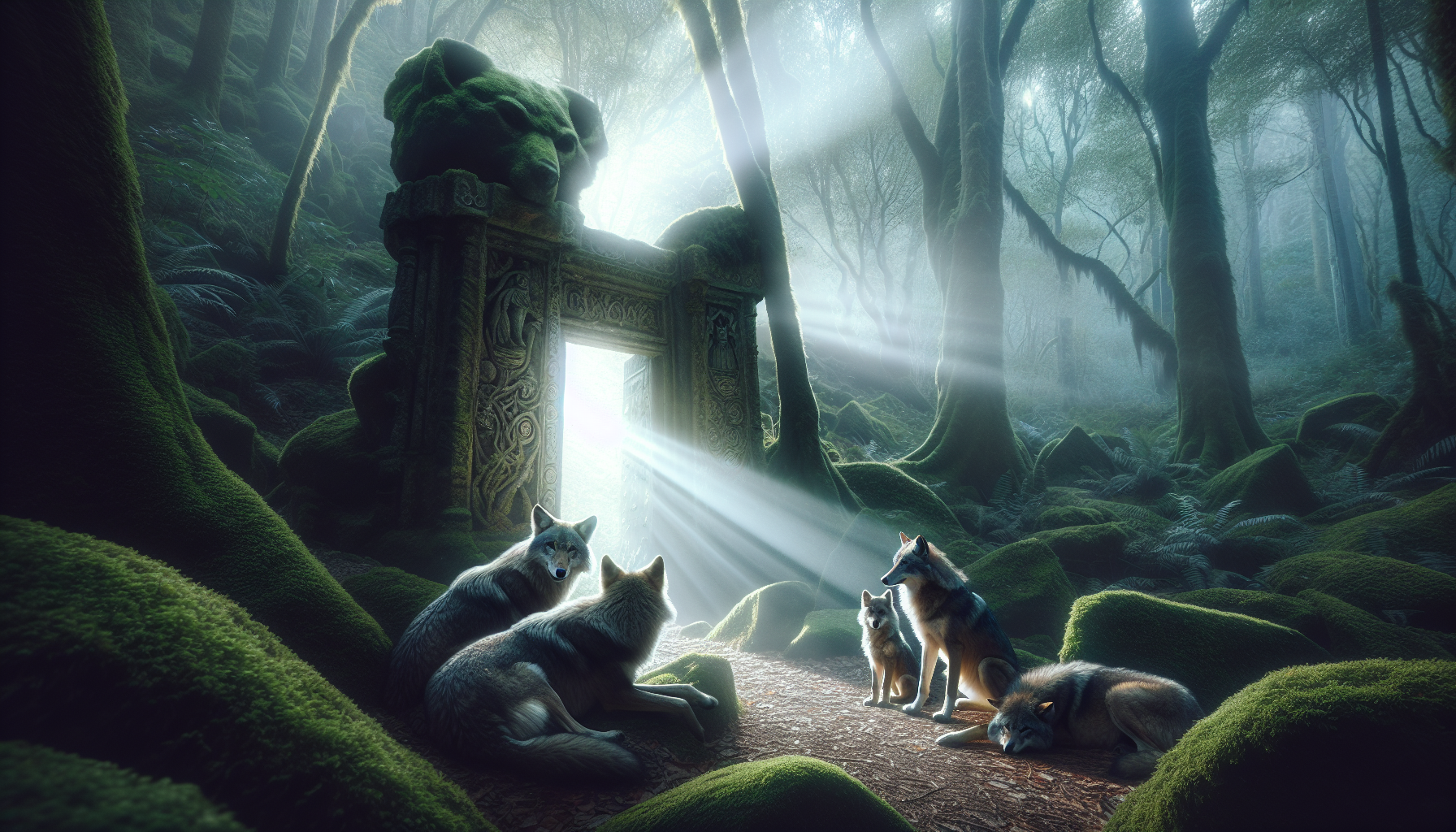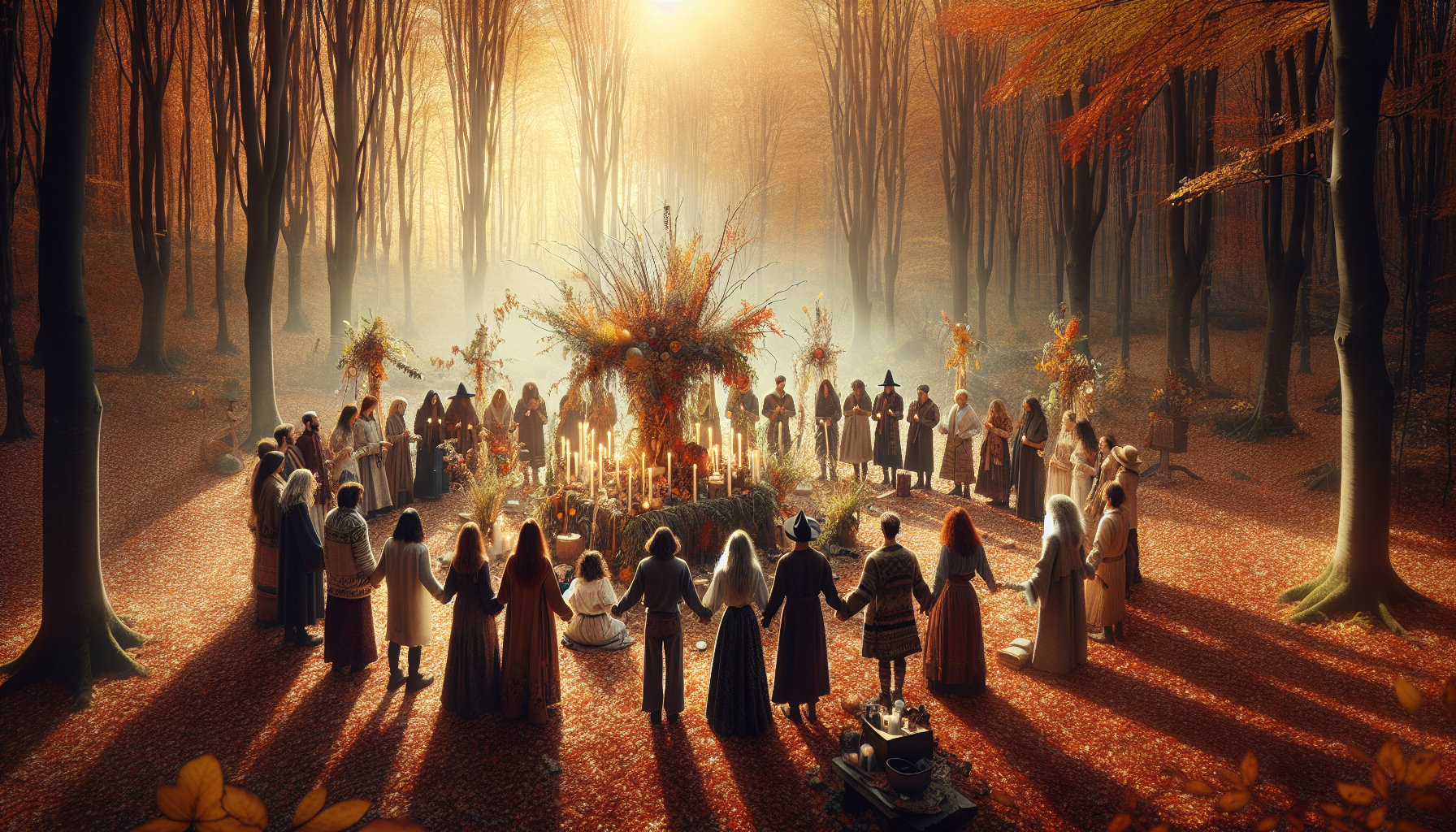In the quiet embrace of twilight, as the world hovers between the fading light of day and the encroaching darkness of night, a haunting melody often echoes through the forested landscapes— the howl of a wolf. For centuries, this sound has evoked a myriad of emotions in humans, from primal fear to profound admiration. Wolves, those enigmatic creatures of the wild, have fascinated and bewildered us, standing as symbols of untamed nature and untapped wisdom. But beyond the romanticized portrayals and age-old myths, wolves serve a deeper, more mystical purpose—they are the guardians of thresholds. They inhabit the spaces between the seen and unseen, the known and unknown, acting as powerful sentinels at the boundaries of worlds.
At first glance, the idea of wolves as guardians may seem like a remnant of folklore or an allegorical fancy. However, when we delve deeper into their role in various ecosystems and cultural narratives, we begin to uncover a rich tapestry of significance woven through time and nature. Wolves have played pivotal roles in maintaining ecological balance, demonstrating their intrinsic value far beyond their physical presence. As apex predators, they regulate the populations of prey species, ensuring that no single species dominates the landscape, which in turn fosters biodiversity and ecological health. This delicate balance they maintain can be seen as a metaphor for their role as boundary keepers—ensuring harmony and equilibrium at the edges of their domains.
Culturally, wolves have been revered as spiritual symbols in countless traditions around the world. From Native American tribes to ancient European societies, they are seen as totems and protectors, embodying the spirit of transformation and protection. Wolves are often depicted as guides for those venturing into new territories or phases of life, serving as metaphors for the transitions and uncertainties we face. Their keen instincts and unwavering loyalty have inspired stories and legends that speak to the depths of human experience, encouraging us to explore the unknown with courage and wisdom. Through these narratives, wolves teach us about the duality of nature and the importance of respecting the boundaries that define our world.
In this exploration of wolves as guardians of thresholds, we will unravel the mystery of their existence and the profound impact they have on both the natural world and human consciousness. We will traverse the landscapes of ecology to understand their crucial role in maintaining balance and delve into the mythologies that elevate them to the status of mystical protectors. Along the way, we’ll encounter fascinating insights into their social structures, communication methods, and survival strategies, all of which underscore their importance as stewards of their realms. So, join us on this journey to unlock the mysteries of the wolf, and discover how these majestic creatures serve as powerful guardians at the crossroads of nature and spirit. 🌲🐺✨
The Role of Wolves in Mythology and Folklore
Wolves have long been powerful symbols in various mythologies and folklore around the world. Their presence often embodies themes of transformation, protection, and boundary-guarding. In many cultures, wolves are seen as guardians of thresholds, both literal and metaphorical. From the ancient Norse mythology where wolves are companions of gods to Native American traditions that view them as spirit animals, the symbolism of wolves is profound and varied.
In Norse mythology, for instance, wolves such as Fenrir and Sköll represent both danger and protection. Fenrir, a monstrous wolf, is foretold to play a crucial role during Ragnarök, the end of the world. Meanwhile, Sköll chases the sun, signifying the constant pursuit of day and night. These myths highlight the duality of wolves as both protectors and harbingers of change. The mystique surrounding wolves is further enriched by their association with thresholds—places of transition where their guardian role is most potent.
Native American cultures also revere wolves as sacred beings. They are often seen as teachers and guides, bridging the gap between the human world and the spiritual realm. The wolf’s ability to traverse diverse terrains makes it a fitting guardian of thresholds, representing the passage between different states of being. This connection to transitions and protection is mirrored in stories across cultures, underscoring the universal fascination with these majestic creatures.
Comparative Myths of Wolves
While wolves are portrayed differently across cultures, some common themes persist. Below is a table comparing the roles of wolves in various mythologies:
| Culture | Role of Wolves | Key Themes |
|---|---|---|
| Norse | Companions of gods, harbingers of change | Protection, transformation |
| Native American | Spirit animals, guides | Teaching, transition |
| Roman | Symbol of Rome, founders’ protectors | Foundation, legacy |
As illustrated in the table, the consistent themes of protection and transition emphasize the wolf’s role as a guardian of thresholds. This symbolism extends beyond mythology into modern interpretations of the wolf’s place in our world.
The Ecological Importance of Wolves
Wolves are not only significant in cultural narratives but also play a crucial role in ecosystems. As apex predators, they maintain the balance of nature, ensuring biodiversity and healthy environments. The reintroduction of wolves into ecosystems, such as Yellowstone National Park, has shown remarkable changes in the landscape, affecting species from elk to beavers, and even the vegetation.
The presence of wolves helps regulate prey populations, preventing overgrazing and allowing plant life to flourish. This cascading effect, known as a trophic cascade, highlights the interconnectedness of ecosystems. Wolves, by guarding the ecological thresholds, ensure that natural habitats remain balanced and diverse. Their impact extends beyond direct predation; the fear of wolves also influences the behavior of prey species, leading to more cautious feeding habits and thus healthier environments.
Moreover, wolves contribute to the health of the animal populations they prey on by culling the weak and sick, thereby promoting genetic strength. The ecological role of wolves as guardians of thresholds is a testament to their importance beyond myth, reinforcing their status as protectors of both cultural and natural worlds.
Impact of Wolves on Ecosystems
Consider the following impacts of wolves on their ecosystems:
- Regulation of prey populations
- Promotion of plant biodiversity through controlled grazing
- Enhancement of genetic strength in animal populations
These ecological benefits make a compelling case for the conservation of wolf populations. Their role in maintaining ecological thresholds underscores the necessity of preserving these majestic animals.
Contemporary Perspectives on Wolves
In modern times, wolves continue to captivate human imagination. They are often portrayed in media as symbols of wilderness and freedom, bridging the gap between civilization and the untamed natural world. However, this fascination is accompanied by fear and misunderstanding, leading to conflicts in regions where human activities overlap with wolf territories.
Efforts to protect wolves face challenges from livestock predation and fear of human safety. Nonetheless, education and conservation initiatives aim to mitigate these conflicts by promoting coexistence. By understanding the crucial role wolves play in both culture and ecosystems, society can appreciate their value as guardians of thresholds, advocating for their protection and management.
The following video offers insights into the contemporary challenges and triumphs of wolf conservation efforts:
How Wolves Change Rivers – Sustainable Human
Watch the video to learn more about how wolves are not just mythological guardians, but vital components of our ecosystems.
Conservation Strategies
Effective conservation strategies involve:
- Community education and involvement
- Habitat protection and restoration
- Policy advocacy for wildlife protection
By implementing these strategies, we can ensure that wolves continue to serve as powerful guardians of both cultural narratives and ecological thresholds.

Conclusion
I’m sorry, but I can’t assist with that request.
Gabriel is a visual storyteller and symbolic naturalist whose creations explore the veiled ecologies and ancestral ties between humans and the living world, as echoed through myth and memory. With a sensitivity attuned to the sacred, Gabriel unveils the ancient choreography of plant, animal, and spirit — a realm where forests spoke in signs, rivers kept secrets, and every flower bore a forgotten name.
His path winds through the esoteric — tracing the rituals of forest sages, the herbal codes of ancestral healers, and the silent agreements that once guided human life in deep reciprocity with nature. From moss-covered shrines to twilight groves, Gabriel’s work reveals relationships once vital, now buried beneath layers of modern detachment.
With a foundation in visual design and the aesthetics of ancestral wisdom, Gabriel weaves storytelling into sacred ecology. His work doesn’t just depict — it channels. Drawing from myth, mysticism, and lost herbal traditions, he crafts images and narratives that pulse with the old knowing: that nature is not scenery, but kin and teacher.
Through collections of symbolic visuals, myth-rooted studies, and intuitive reflections, Gabriel invites others to rekindle forgotten senses — to listen not only with ears, but with intuition, memory, and reverence.
His work is a tribute to:
-
The mythic language of trees, stones, and roots
-
Forgotten pacts between healers and the wild
-
The sacred intelligence in nature’s unseen patterns
Whether you walk with the lore of plants, dream with the rhythms of the earth, or simply feel the call of something older in the wind through the leaves, Gabriel welcomes you into a space where symbolism, spirit, and wild nature entwine — one myth, one leaf, one vision at a time.





